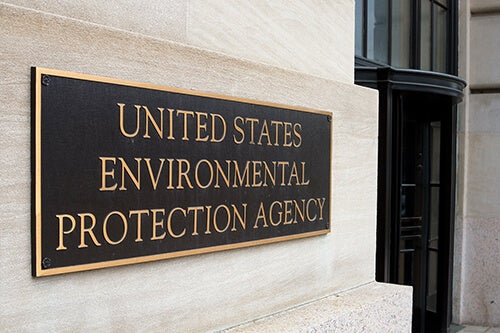As we close the chapter on 2024, it’s clear that global regulatory landscapes are poised for significant — and, in many cases, unprecedented — changes in 2025. From chemical restrictions, product sustainability, and trade barriers to increasing requirements for corporate sustainability reporting, the coming year is bound to challenge businesses across all sectors. Here’s a forward-looking guide to the critical regulatory trends and initiatives that demand your attention.
Global Market Access: A Growing Tide of Requirements
The concept of “global market access” has long transcended the traditional exporter/importer model. By the end of 2024, the World Trade Organization’s Technical Barriers to Trade (TBT) Committee recorded over 4,337 regulatory notifications, setting a new record and surpassing last year’s total with a month still to go. These aren’t cumulative figures — these are fresh annual counts, signaling relentless growth in new product-related regulations worldwide.
Key Takeaway
Regardless of whether you’re selling domestically or internationally, you’re operating in an increasingly complex regulatory ecosystem. Manual data management (or management by spreadsheet) cannot keep up. Forward-looking companies must invest in robust supply chain sustainability management solutions to meet evolving standards and maintain market access.
PFAS: The Tsunami Continues to Gather Strength
If there’s one acronym dominating regulatory and corporate agendas, it’s PFAS. These persistent chemicals are under intense global scrutiny, with both regulatory and other business implications:
North America
Canada: A new PFAS reporting requirement hits in January 2025, with Environment and Climate Change Canada demanding manufacturers disclose 2023 importation and usage data.
United States: In 2024, there were updates to drinking water regulations and Superfund (CERCLA) hazardous substances designations at the federal level. These may indirectly impact manufacturing operations. Expect more PFAS action under TSCA, too, as the focus intensifies on both direct and indirect exposures.
Additionally, in the last few years, states are becoming more aggressive about PFAS, with more than 20 new policies adopted at the state level in 2024. These include significant PFAS requirements in New Hampshire, Rhode Island, Connecticut, and over a dozen more. States continue to hold both PFAS manufacturers and users responsible for contamination, with an increasing number of lawsuits. For example, Maryland’s attorney general recently filed suit against W. L. Gore & Associates, alleging decades of environmental pollution. This underscores that companies using PFAS are not immune from liability simply because they did not originally manufacture these chemicals.
Europe
The Netherlands: In November 2024, the Netherlands added 100 PFAS groups to their ZZS list (similar to the REACH Candidate List of substances of very high concern), signaling a more granular approach. Just as in the U.S., EU member states are increasingly taking their own actions around PFAS, complicating an already-complicated picture for selling products with PFAS in Europe.
EU Overall: While the EU’s broad PFAS restriction proposal advances, it is simultaneously introducing narrower PFAS prohibitions through regulations such as REACH and POPs (persistent organic pollutants, the EU’s implementation of the Stockholm Convention). This multi-layered strategy means manufacturers must track several regulatory pathways at once.
Asia
Japan: As of January 10, 2025, 138 PFOA-related chemicals are designated as Class I Specified Chemical Substances, effectively banning their manufacture, import, and use, including in some products.
Key Takeaway
These actions reflect a universal shift toward stricter PFAS controls. Several PFAS are included in the Stockholm Convention, driving restrictions in countries like Japan and in the POPs Regulation in the EU. In fact, with over 150 signatories, the Stockholm Convention will ensure that there are nearly no markets available for products containing certain PFAS. Beyond the national laws, state-level laws are proliferating, and litigation is on the rise, targeting both PFAS producers and users. Meanwhile, insurers and investors are applying pressure for PFAS phase-outs, making these chemicals a corporate governance and sustainability concern as much as a regulatory one.
Ultimately, this means PFAS regulations are no longer a niche issue. They require immediate and strategic action — inventory assessments, supplier engagement, product reformulations, and long-term compliance plans. Certain PFAS pose an even higher risk of both restriction and litigation. Knowing whether your products contain PFAS is not enough — it’s important to know which of the over 16,000 PFAS (full lists here and here) are present, in what amounts, and for what purpose, in order to meet regulatory and reporting requirements and maintain market access for your products.
Chemical Regulations Keep Intensifying
The Toxic Substances Control Act (TSCA)
New Section 6(a) restrictions were finalized for five substances in 2024, and with the new chemical review process established under TSCA Reform in 2016, we will see a continual pipeline resulting in new restrictions moving forward. The “First Ten” final risk management rules for chrysotile asbestos, methylene chloride, perchloroethylene (PCE), trichloroethylene (TCE) and carbon tetrachloride (CTC) set a precedent as the first new risk management rules under the new process, which will continue to bring up chemicals for review in 2025 and beyond.
EU REACH
An unusual late-year addition of new substances of very high concern (SVHCs) in November 2024 shows the EU’s willingness to deviate from standard release schedules. As the comprehensive PFAS restriction moves through the EU legislative process, other Annex XVII restrictions continue to emerge, raising the bar for compliance.
California Proposition 65
New “short-form” warning requirements took effect January 1, 2025, with a three-year phase-in period. At least one specific chemical must now be listed on the label, which means companies may have to change their existing labeling strategies and compliance efforts.
Key Takeaway
Compliance professionals need dynamic solutions that can monitor regulatory activity and adapt to changing chemical regulations across multiple jurisdictions, factoring in both product-level and supply chain data.
Non-Regulatory Drivers: Customers, Investors, NGOs & Insurers
Compliance is not just about laws and regulations. Customers increasingly demand healthier, safer products. NGOs and advocacy groups push for stricter standards and less toxic chemical profiles. Insurers respond to rising litigation by pressuring clients to discontinue harmful substances. Investors impose ESG and climate targets and sustainable finance conditions, and expect companies to phase out chemicals of concern. In fact, the Investor Initiative on Hazardous Chemicals attracts more investors each year and now represents over 70 investors who manage more than $18 trillion, joining together to pressure chemical manufacturers to be more transparent and ultimately reduce hazardous chemicals. These investors understand the long-term financial implications to companies that continue to make and use chemicals like PFAS.
Key Takeaway
Holistic compliance strategies must engage stakeholders throughout the value chain beyond just suppliers and customers. Long-term brand value, insurance costs, and investor relations are all at stake.
Carbon Border Adjustment Mechanism (CBAM) & EU Emissions Trading Scheme (ETS)
For companies importing certain carbon-intensive goods to the European Union, the EU’s CBAM and ETS mechanisms are game-changers. CBAM currently applies to specific carbon-intensive sectors — steel, aluminum, cement, fertilizers, electricity, and hydrogen — but could expand to a broader range of goods by 2030. Coupled with the ETS, these policies aim to bring the carbon price for commodities manufactured outside the EU in line with those manufactured within it. This forces global manufacturers to quantify and report embedded carbon in their products and ultimately encourage other countries to implement similar objectives.
Key Takeaway
Many companies have been measuring their emissions — especially scope 1 and scope 2 — for years. However, it’s essential that you begin measuring and managing your product’s carbon footprint now. CBAM compliance is not just an administrative hurdle; it’s tied to cost, market access, and future competitiveness. And the need to understand and declare the carbon footprint of your products is finding its way into numerous other regulations and will be a requirement for market access in multiple jurisdictions in the future.
Sustainable Products, Deforestation-Free Supply Chains, & Responsible Sourcing
This year we finally saw the result of nearly a decade of work to define — and obligate — “sustainable products” in the European Union. Published in July 2024, the Ecodesign for Sustainable Products Regulation (ESPR) replaces the former Ecodesign Directive (2009) and is a CE-marking requirement for access to the EU market. A “sustainable product” is one that has been thoughtfully designed, produced, utilized, and disposed of in a way that minimizes its impact — and may even be beneficial — to the environment, economy, and society throughout its entire life cycle.
The new ESPR will require manufacturers to go beyond its predecessor’s focus on energy efficiency to consider numerous sustainable aspects of their products, including the presence of substances of concern (SOCs, not to be confused with REACH SVHC’s), repairability, energy and water use, recycled content, upgradability, and durability, among other requirements. The ESPR will eventually require manufacturers to provide transparency into these aspects of their products via a Digital Product Passport.
Product “sustainability” extends to responsible sourcing as well. The EU Deforestation Regulation (EUDR) will eventually demand full transparency into the agricultural origins of raw materials. Meanwhile, Responsible Minerals Initiative (RMI) expansions will require more detailed supply chain data. Companies will need to go beyond the four so-called “conflict minerals” and cobalt and mica to include copper, lithium, nickel, and graphite.
Key Takeaway
Product regulations are increasingly redefining sustainability to address the entire life cycle and expanding the definition of an “environmental product.” In the past, manufacturers may have voluntarily addressed these issues in their designs, logistics, and disposal, but the ESPR makes them legal requirements for selling products. The need to disclose information such as the origin of the rubber they use in gaskets, the carbon footprint of their product, or the presence of over 3,000 defined SOCs requires companies to build systems to track, verify, and report environmental, social, and governance data across complex supply chains. The Digital Product Passport will be a game-changer for product transparency and will require sophisticated data collection and management.
Forced Labor & Human Rights Due Diligence
Forced labor regulations are proliferating, with different countries using diverse approaches: disclosure-based, trade-based, or integrated into broader ESG frameworks. The EU’s Corporate Sustainability Reporting Directive (CSRD) and soon-to-emerge Corporate Sustainability Due Diligence Directive (CS3D) will mandate rigorous human rights and environmental due diligence across value chains.
Key Takeaway
Human rights due diligence is no longer a nice-to-have. It’s a foundational element of market access and brand reputation, requiring both top-level governance structures and on-the-ground supply chain engagement.
The EU’s Sustainability Omnibus: A Potential Regulatory Shake-Up
By February 2025, the EU is expected to publish an Omnibus Simplification Package meant to streamline the European Green Deal’s sustainability frameworks (Taxonomy, CSRD, CS3D). While the stated goal is reducing regulatory burden, some fear a dilution of ambitious climate and social targets. This ongoing debate may open another chapter in regulatory negotiations, making it critical for businesses to stay informed and adaptable.
Key Takeaway
Regulatory landscapes are fluid. Even “final” regulations may be consolidated, revised, or challenged. Continuous monitoring and the agility to pivot compliance strategies are essential to staying ahead of requirements.
Looking Ahead
The regulatory shifts we see taking shape for 2025 aren’t just incremental; they are structurally changing how companies operate globally. Between chemical bans, PFAS crackdowns, carbon accounting, human rights due diligence, and sustainability reporting mandates, the coming year could prove pivotal. Those who approach these changes as strategic opportunities rather than compliance burdens will not only survive but thrive in the new regulatory era.
To learn how Assent can elevate your supply chain sustainability management program in 2025, book a demo with our team.















